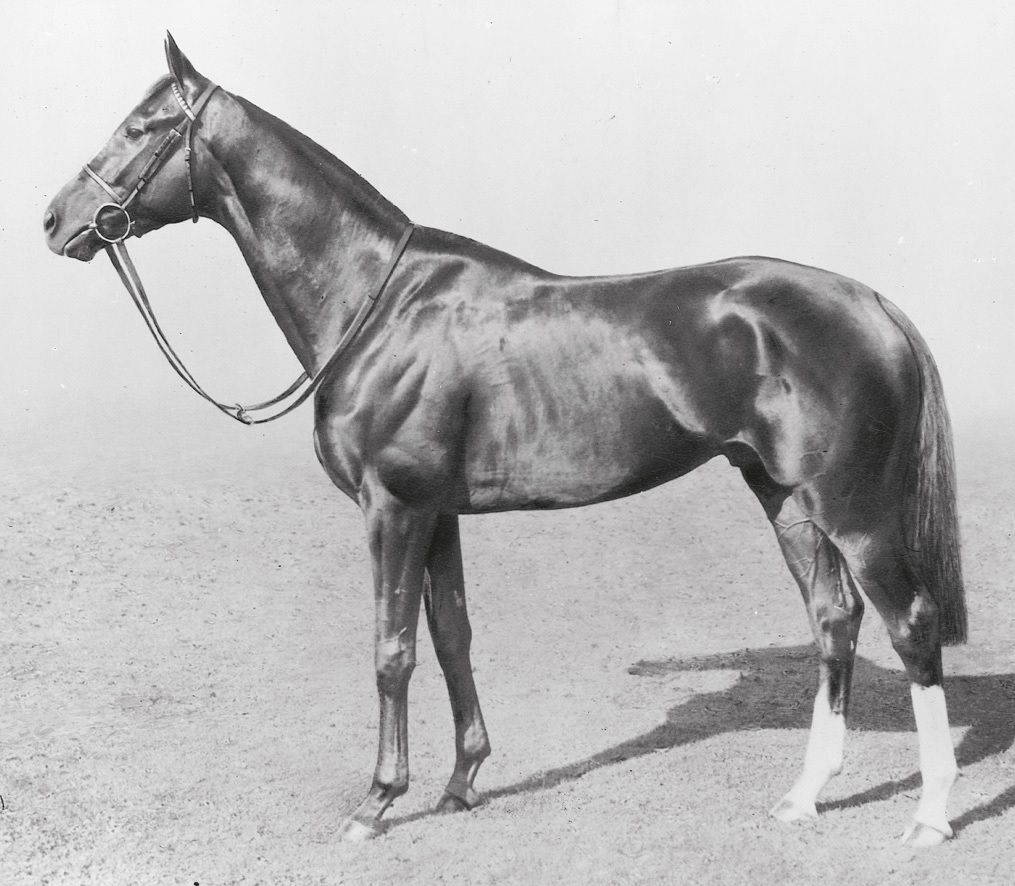SEA-BIRD
THE HIGHEST RATED (145) DERBY WINNER
OF THE 20th CENTURY

A bright chestnut colt with a white blaze and two hind stockings, Sea-Bird stood 16 hands. By Dan Cupid out of Sicalade by Sicambre, he was bred by his owner, Jean Ternynck, a French textile manufacturer, and trained by Etienne Pollet at Chantilly. Ternynck had previously won the 1,000 Guineas with Cameree in 1950, while Etienne Pollet, with never more than 50 horses in his stable, had already notched up three Classic winners: Thunderhead (2,000 Guineas 1952), Never Too Late (1,000 Guineas and Oaks 1960) and Hula Dancer (1,000 Guineas 1963).
Sea-Bird ran three times as a juvenile, winning the Prix de Blaison at Chantilly and the Criterium de Maisons-Laffitte, both by a short neck. He then suffered his only defeat, when second to his preferred stablemate, Grey Dawn, in the Grand Criterium at Longchamp.
The following year, Sea-Bird won the Prix Greffulhe by three lengths and the Prix Lupin by six. When Pollet announced that Epsom was the plan, an avalanche of money followed and Sea-Bird became the overwhelming favourite for the Derby, shortening to 7-4 on the day. The remote market opposition was led by the Paddy Prendergast trained, Meadow Court at 10-1, previously second in the Dante Stakes, now ridden by Lester Piggott, and part-owned by Bing Crosby. Others supported were Niksar, winner of the Two Thousand Guineas, and Gulf Pearl, successful in the Chester Vase.
On Wednesday, 2 June, 1965, a bright and sunny Derby Day, 22 runners lined up on good ground. Suddenly, as the tapes went up Sea-Bird, already in the second row, was caught sideways on. Jockey, Pat Glennon, however, stayed calm and although last after the first 50 yards, threaded his way through to the top of the hill, where Sunacelli led Bam Royal, Niksar and Meadow Court. Rounding Tattenham Corner, Sunacelli continued to lead from Niksar and Gulf Pearl, followed by Meadow Court and I Say. However, once in the straight and passing the three-pole, I Say came out of the pack to take a three-lengths lead. But not for long, as Sea-Bird cruised up from sixth to challenge and then go on before the distance, easing down to win by two lengths in a canter. In the closing stages, Meadow Court ran on well to take second, ahead of I Say and Niksar. Seldom had a Derby been won with such complete, almost contemptuous, authority.
Of the beaten runners, Meadow Court went on to win the Irish Sweeps Derby and King George VI and Queen Elizabeth Stakes, I Say, won the Coronation Cup and Silly Season, the St James’s Palace Stakes and Champion Stakes.
After winning the Grand Prix de Saint-Cloud, Sea-Bird’s finale came in the Prix de l’Arc de Triomphe. It was to be his finest performance, annihilating a top class field, to win by six lengths from Reliance (Prix du Jockey-Club and Grand Prix de Paris), with Diatome (future winner of the Washington D.C. International) a further five lengths away third. Further back in the 20-runner field, were the Russian champion Anilin, Tom Rolfe (Preakness Stakes), Blabla (Prix de Diane), and Meadow Court.
Assessed by Timeform as the highest rated Derby winner of the 20th century, Sea-Bird’s pedigree warrants examination. Interestingly, there is continued success from the sire-line’s first crops, for example: his sire, Dan Cupid, came from the first crop of Native Dancer; Sea-Bird came from the first crop of Dan Cupid and Gyr, from the first crop of Sea-Bird. Strangely, none of his first five dams won a race on the Flat.
Before the Arc, an American syndicate agreed to lease Sea-Bird at £95,000 a year for five years. So in 1966 he stood at John Galbreath’s Darby Dan Stud in Kentucky, where the contract was extended until late 1972, when Sea-Bird returned to France. Sadly, however, before his first European season started, he contracted colitis and died on 15 March, 1973.
His notable progeny included Gyr, winner of the Grand Prix de Saint-Cloud and second to Nijinsky in the Derby; the outstanding filly, Allez France, winner of the 1974 Prix de l’Arc de Triomphe and Little Current, successful in the 1974 Preakness Stakes and Belmont Stakes.
Never has a Champion been so sorely missed.
For more racing history go to Michael’s Books for Sale . To see Michael’s interviews go to the foot of About Michael